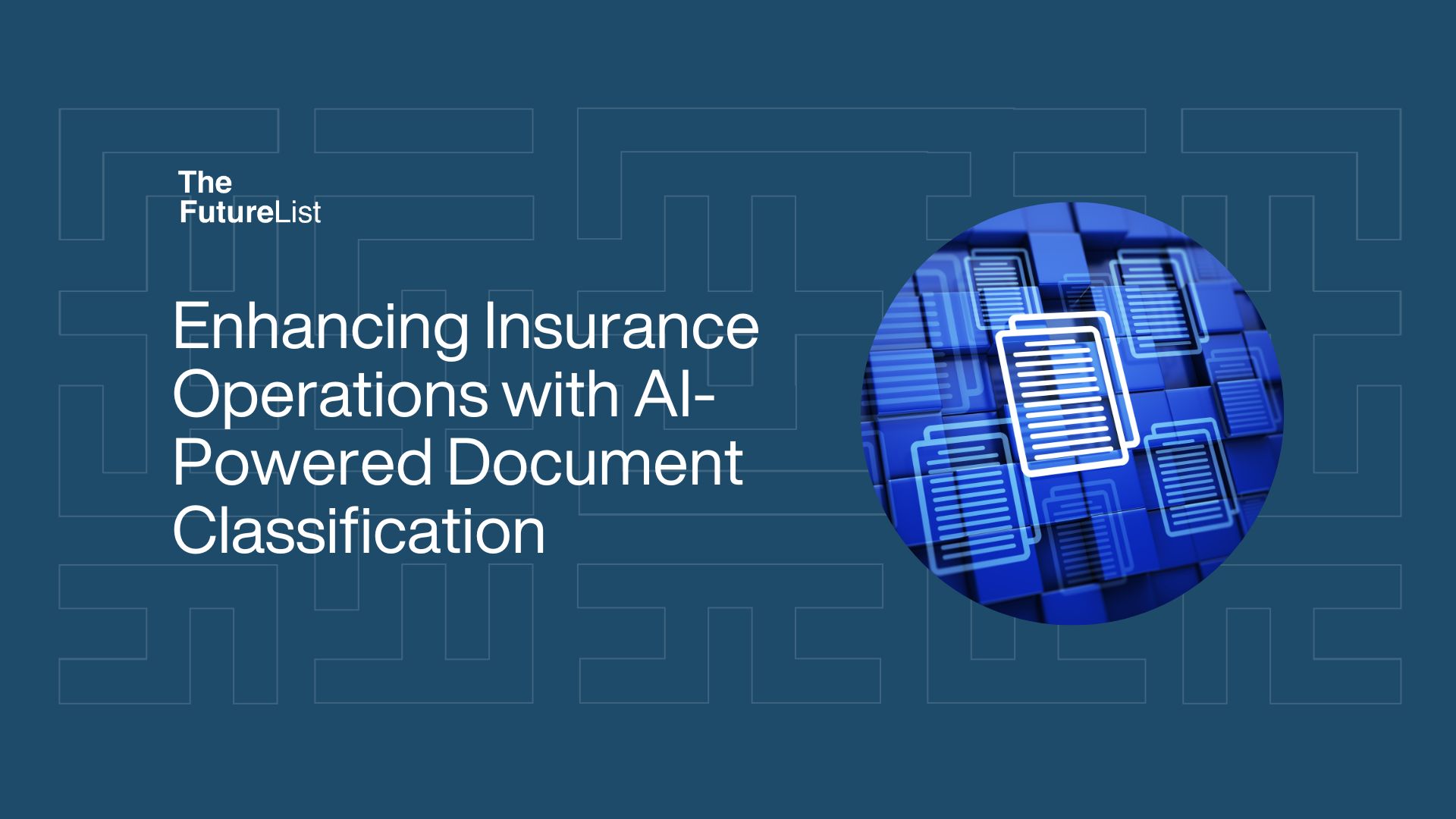
Enhancing Insurance Operations with AI-Powered Document Classification
By Henry Duah
The insurance industry has long been burdened by paperwork-heavy processes, leading to delays, errors, and inefficiencies. However, the integration of AI-driven solutions in the insurance industry is revolutionizing how insurers handle vast amounts of documentation, enabling faster processing, greater accuracy, and improved decision-making. AI-powered document classification has become a game-changing innovation transforming how insurers handle documents. By leveraging artificial intelligence, insurtech companies are automating the tedious yet crucial task of organizing, analyzing, and extracting data from vast amounts of paperwork. The result is faster claims processing, reduced costs, and a seamless customer experience.
Why Document Classification Matters in Insurtech
- Streamlining Processes: Automating document classification enables insurance companies to process large volumes of paperwork quickly and accurately, minimizing manual effort and enhancing operational efficiency.
- Faster Claims Processing: AI-driven classification accelerates claims workflows by quickly identifying and categorizing claim-related documents, leading to faster payouts and improved customer satisfaction.
- Improved Accuracy: AI-powered systems ensure precise document categorization, reducing errors and maintaining data integrity across insurance operations.
- Enhanced Underwriting: By efficiently organizing policyholder documents and risk assessments, automated classification enables underwriters to make well-informed decisions faster.
- Improved Customer Satisfaction: By automating document handling, insurers provide faster responses, proactive communication, and a more transparent and hassle-free experience for customers and clients.
How AI-Powered Document Classification Works
- Intelligent Document Ingestion
AI-powered tools use Optical Character Recognition (OCR) and Natural Language Processing (NLP) to convert various document formats, such as PDFs and scanned images, into machine-readable text.
- Automated Document Classification
Machine learning models analyze content, structure, and metadata to categorize documents accurately, distinguishing between claims, policies, and other insurance-related paperwork.
- Data Extraction and Structuring
AI extracts key details like claim numbers, policyholder data, and coverage specifics, using named entity recognition (NER) to structure the information for seamless processing.
- Validation and Fraud Detection
Extracted data is cross-checked against internal databases and fraud detection models, flagging anomalies and potential fraud risks for further review.
- Seamless System Integration
AI-driven classification integrates with existing claims management, underwriting, and policy administration systems, automating workflows and enhancing operational efficiency.
These steps collectively enhance operational efficiency, reduce processing times, and improve accuracy in the insurance sector. Like most AI systems, AI-powered document processing systems continue to refine their accuracy over time through reinforcement learning and user feedback, adapting to new document types and industry changes.
Companies Spotlight
Roots Automation, founded by Chaz Perera and John Cottongim, specializes in document classification and indexing for underwriting and claims management, improving automation and reducing processing time. Roots Automation enhances insurance operations with AI-powered Digital Coworkers that streamline claims, underwriting, and back-office processes. These intelligent systems read, process, and automate business workflows, reducing manual effort, improving accuracy, and increasing operational capacity.
Cognaize, founded by Vahe Andonians, leverages AI to transform financial document automation, enabling institutions to extract actionable intelligence from unstructured data with unmatched accuracy. By combining neuro-symbolic AI, advanced layout understanding, and finance-specific language models, Cognaize enhances data processing, compliance, and decision-making. Its adaptive Enterprise Knowledge Platform integrates seamlessly into financial workflows, ensuring efficiency, scalability, and regulatory alignment. It has proven to help insurance companies improve their document processing accuracy at a lower cost.
Get innovation insights from The FutureList weekly. Subscribe to our newsletter here
Categories
- Agritech
- Artificial Intelligence
- Biotech
- Blockchain
- Climate Tech
- Data Infrastructure
- Edtech
- Events
- Fashion
- Fintech
- Healthtech
- Infrastructure
- Innovation Memos
- Innovation Scout Program
- Insight
- Insurtech
- Machine Learning
- Martech
- Mobility
- Music and Media
- Partner Offers
- Perks
- Procurement
- Proptech
- Retailtech
- Ridehailing
- Ridesharing
- Robotics
- Space Aviation
- Supply Chain
- Talent
- Telecoms
- Uncategorized
- Venture Capital
- Wastetech
- Women In Tech
Recent Posts
- The Rural Health Operating System: Reinventing Access to Care in Africa
- Intelligent Grid Monitoring: How IoT and AI Are Powering the Future of Energy
- Innovation Memo with STEMAIDE: Hands-on STEM Education for Young Africans
- Transforming Health in Africa, One Project at a Time
- Smart People: A core pillar for Smart Cities